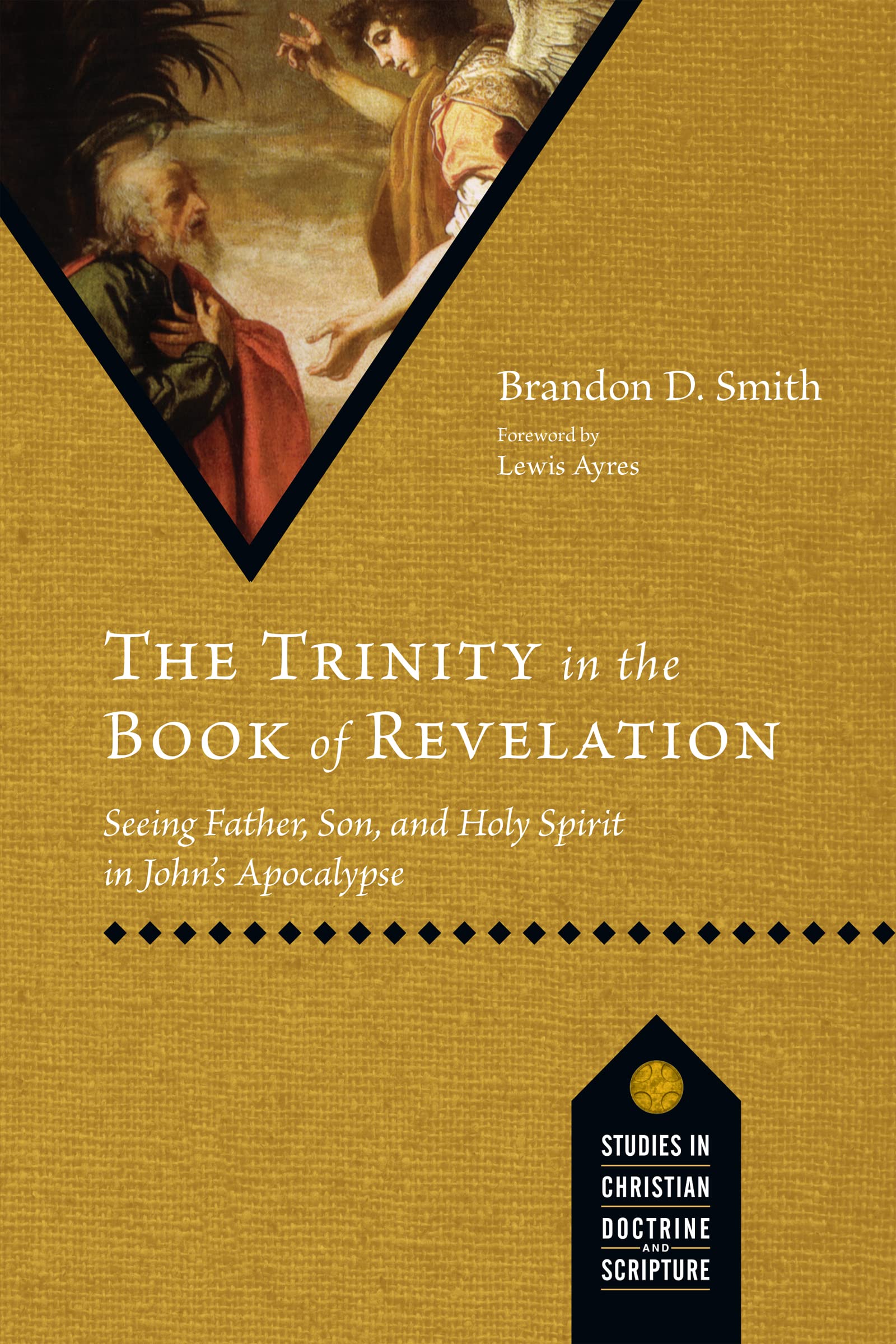A Book Review from Books at a Glance
by Ryan M. McGraw
What do we primarily associate with the book of Revelation? Simply naming the book likely brings lots of theological baggage and controversy to the surface in our minds. Do we think predominantly of things like controversies over the millennium, the Antichrist, and creative novels depicting possible ways in which the events described in the book will unfold? Yet the one thing that should grip our attention in Revelation is the book’s depiction of the Triune God, focusing on the exalted and reigning Christ. The things that we often want to look for are not always the things that God intends us to look for. In this book, Brandon Smith wonderfully draws our attention to what the book of Revelation teaches us about God himself, blending historic Trinitarian theology with responsible exegesis and theological reflection. Learning how Revelation reveals the Triune God has potential to permanently alter both what we look for and what we find in reading the book, as the author gives a solid model for putting the Trinity back at its center.
Smith’s thesis is that “a Trinitarian reading of Revelation is not an imposition on the text, but is rather drawn from a close reading of the text” (4), with his goal being “to contemplate and grow in our understanding of the triune God, whom we worship and stake our lives on” (1). The first chapter establishes a model for a Trinitarian reading of the book of Revelation, introducing key historic Trinitarian ideas as well as surveying current scholarship on Revelation. Chapters two through four then apply this model to text focusing on the Father, Son, and Spirit, respectively. Finally, the last chapter illustrates how this approach contributes to Trinitarian theology, exegesis, church life, and practice. Each chapter draws from pro-Nicene authors from the late fourth century, providing readers with conceptual tools to grasp the revelation of God in the biblical text (15, 18). To read Revelation rightly, he contends that we need both a theological and canonical approach to reading (27-28). Theological in that the text of Scripture is about God, and canonical in that Revelation both draws from the OT extensively and is part of a single canon of divinely inspired Scripture, presenting a single unfolding depiction of God. As such, readers need to identify theological assumptions behind the book, as well as to harmonize this revelation of God with the rest of the Bible. Following this introductory material, chapters 2-4 focus on the Father, Son, and Spirit, each starting with Pro-Nicene conceptions of each divine person, followed by careful exegesis of select passages through Revelation. Smith’s final chapter seeks to apply his Trinitarian reading of Revelation to demonstrate how this material “contributes to trinitarian theology and exegesis today” (173). He offers both persuasive Trinitarian readings of key texts in the book and a path forward for learning how to read the whole Bible through a Trinitarian lens. Such things mark a substantial step forward in Trinitarian exegesis and devotion that can only strengthen the church.
Key Trinitarian ideas stand out clearly through his painstaking exegetical work. Particularly, inseparable operations and the presence of order (taxis), and lack of subordination in the Trinity are constant refrains throughout the book. The point is that detecting the operation of all three persons in each divine work illustrates distinct persons in the one God. Moreover, the order from the Father, through the Son, and by the Spirit tells us something about the order of subsistence in God rather than indicating some kind of divine hierarchy in which the persons are ordered by rank, which has been a persistent error in some strands of modern Trinitarian thought. We see here a mixture of sound theology, robust exegesis, and insightful historical theology, all used as tools to depict John’s vision of the Triune God.
There is at least one substantial, though common, theological mistake in the book, which sheds light on how Trinitarian theology ultimately works. On page 184, Smith refers to the “unbegotten Father’s mission.” However, in classic Trinitarian theology, the Father has no mission precisely because he is unbegotten. Remember that “mission” fundamentally means “sent.” The Father is God of none, the Son is God of the Father, and the Spirit, at least in Western thought, is God of the Father and the Son. In saving sinners, the missions or sending of the Son and the Spirit reflects their processions from the Father in the Godhead. As God of none, the Father is the unsent sender and thus has no mission. This important point bolsters Smith’s rightly repeated emphasis on order without subordination in the Trinity and in God’s works. Because his reference to the Father’s “mission” appears only once, this is a possible oversight on the author’s part. Yet flagging it actually strengthens many of the overarching points of his book about relations of origin in the Trinity and why the persons do what they do in history.
The church has long needed a book focusing on the doctrine of the Trinity in the book of Revelation. Smith not only provides us with such a book, but he sets the right tone in doing so. His first line is, “Doing theology is a holy act that should not be undertaken by the proud and belligerent” (1), and his last line is, “May we look to Revelation to see a vision of our Triune God” (193). Especially if we have read Revelation repeatedly without seeing the glory of the Triune God focused through the exalted and reigning Christ, we should simultaneously be humbled by the fact even as we desire to be caught up in the heavenly worship pictured in the book.
Ryan M. McGraw
Greenville Presbyterian Theological Seminary
